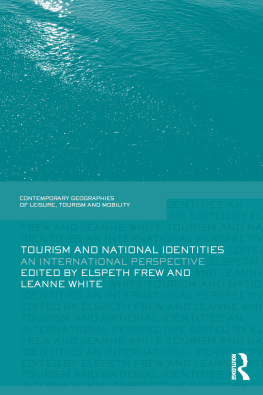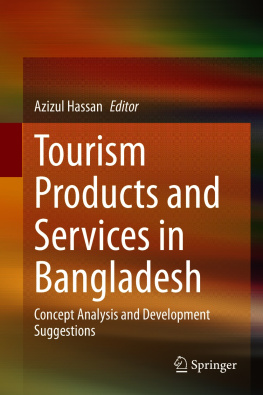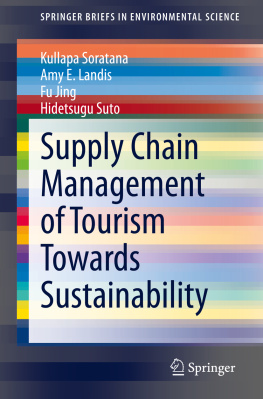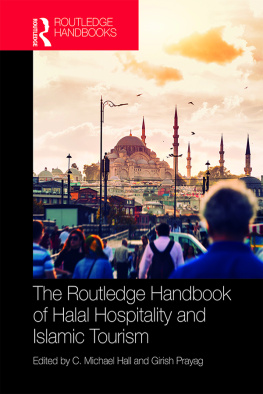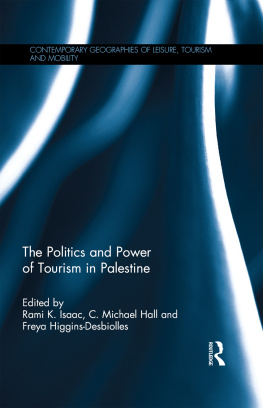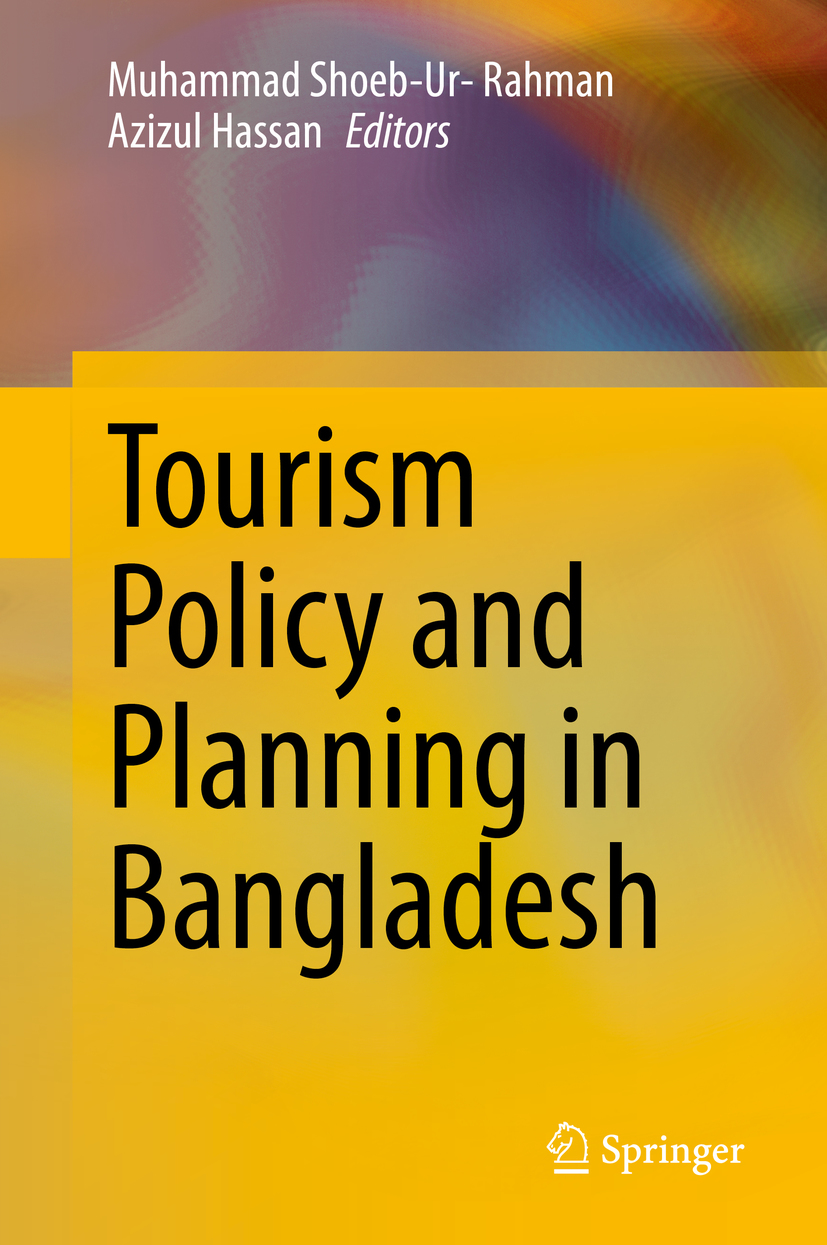Editors
Muhammad Shoeb-Ur- Rahman
Department of Tourism and Hospitality Management, Faculty of Business Studies, University of Dhaka, Dhaka, Bangladesh
Azizul Hassan
Tourism Consultants Network, The Tourism Society, London, UK
ISBN 978-981-15-7013-1 e-ISBN 978-981-15-7014-8
https://doi.org/10.1007/978-981-15-7014-8
Springer Nature Singapore Pte Ltd. 2020
This work is subject to copyright. All rights are reserved by the Publisher, whether the whole or part of the material is concerned, specifically the rights of translation, reprinting, reuse of illustrations, recitation, broadcasting, reproduction on microfilms or in any other physical way, and transmission or information storage and retrieval, electronic adaptation, computer software, or by similar or dissimilar methodology now known or hereafter developed.
The use of general descriptive names, registered names, trademarks, service marks, etc. in this publication does not imply, even in the absence of a specific statement, that such names are exempt from the relevant protective laws and regulations and therefore free for general use.
The publisher, the authors and the editors are safe to assume that the advice and information in this book are believed to be true and accurate at the date of publication. Neither the publisher nor the authors or the editors give a warranty, expressed or implied, with respect to the material contained herein or for any errors or omissions that may have been made. The publisher remains neutral with regard to jurisdictional claims in published maps and institutional affiliations.
This Springer imprint is published by the registered company Springer Nature Singapore Pte Ltd.
The registered company address is: 152 Beach Road, #21-01/04 Gateway East, Singapore 189721, Singapore
Introduction
Muhammad Shoeb-Ur- Rahman
Azizul Hassan
Policy is a broad guideline possessing a wider range of features that direct, in principle, what we can do in the achievement of some predetermined goals. Since policy is usually developed by a government , it involves politics, values and ideological beliefs, communication-led social processes, actions, decision, and outcomes in the forms of legislation and implementation. The involvement of a government or public authority ultimately adds a feature, and the document produced out of this process is termed public policy . Accordingly, tourism policy is a public policy that guides tourism activities and tourism-related decisions at a destination . The perspective of tourism as an industry examines how destinations can secure a competitive edge in global consumer market, which is expanding sharply. The substitute is for considering tourism policy as a domain to examine concepts such as social identity, trust, collaboration, power exercise and so on. This domain is viewed as multi-disciplinary as well as ideology influenced and becomes rapidly diverse, which comes with different analysis levels (i.e. macro, meso, micro).
The study of tourism policy brings at least three core perspectives. First, the policy cycle approach that helps to apprehend the shaping of policy decisions and their impacts. Second, the scientific approach that offers information about practical problem solutions and then feeds forward such information into the policy process. Third, the social approach that admits and appreciates values and interests associated with the policy and planning process. In addition, studying tourism policy has both theoretical and practical significance. The theoretical aspect of tourism policy is about introducing a new horizon of study within a public policy research domain to contribute to the existing body of knowledge. The practical implication of tourism policy is to set a guideline that may direct the process of negotiation such as provisions for using public resources (e.g. national parks, museums, zoos, etc.).
This book is dedicated to study critically various facets of tourism policy and planning in Bangladesh . Bangladesh is a country in South Asia that is geographically surrounded by India to the east, west and south, by Myanmar to the east, and the Bay of Bengal to the south. The country hosts more than 170 million people within a land area of 147,570 square kilometres (56,980 square miles). In recent years until the spreading of novel corona virus (COVID-19), an uptake of foreign remittances and readymade garments assisted the economy of the country to realize a consistent GDP growth. However, tourism in Bangladesh is also flourishing with a particular reference to domestic tourism . On this note, a growing GDP per capita is creating a strong social middle class with enough disposable income to experience tourism and leisure activities. The inbound tourism is not that impressive yet and mostly concentrated on business market segment. There are many nature-based and cultural or heritage destinations in Bangladesh ; still, the country fails largely to attract a broader market segments of tourists. In this connection, the critical role of a tourism policy is not investigated scientifically that much. Given the tourism potential of Bangladesh , this book is a valuable contribution towards the very limited knowledge in this identified research area. The book accommodates conceptual and empirical research studies that link relevant theories and practices, and thereby unifies policy themes and frameworks for tourism development in Bangladesh . The book also critically evaluates extant tourism policy and planning practices to support future endeavours. The book accommodates 18 chapters excluding this introduction, which provides a brief layout of this book.
The first chapter of the book is contributed by Sayeda, Shetu and Rahman. The chapter sets a tone for the book by giving an overview of tourism policy in Bangladesh . The authors systematically explore and present policy and planning guideline for tourism development in the country. In this view, the National Tourism Policy-2010 and 5-year fiscal plans of the country have been explored. The chapter develops logical arguments to conclude some limitations in the existing policy and planning initiatives.
The second chapter, authored by Islam and Hassan, reviews the existing tourism administration literature with particular reference to Bangladesh . The roles and responsibilities of the Ministry of Civil Aviation and Tourism (MoCAT) and its associated agencies including Bangladesh Parjatan Corporation (BPC) and Bangladesh Tourism Board (BTB) have been brought into consideration. The study finds that the Government of Bangladesh offers diverse courses and expertise development initiatives to create awareness among tourism administrators about tourism laws, rules, regulations, policies , frameworks and structure. The chapter identifies some insufficiencies in the tourism administration system in Bangladesh and offers future directions for an effective tourism administration .
In the third chapter, Anika, Khan and Hassan conceptualize the roles, responsibilities and benefits of diverse stakeholder groups at a tourist destination . A case analysis has been conducted with a specific reference to Kuakata , Bangladesh, while emphasizing the roles and responsibilities of the local government . The chapter focuses on obstacles, undesirable issues and influence of stakeholder groups that constrain tourism development and sustainable tourism practices in the region. Overall findings lead to a conclusion that stakeholders effective presence in decision-making and implementation of actions can be crucial for sustainable tourism development . Local government can play a ground-setting role for this initiative.



